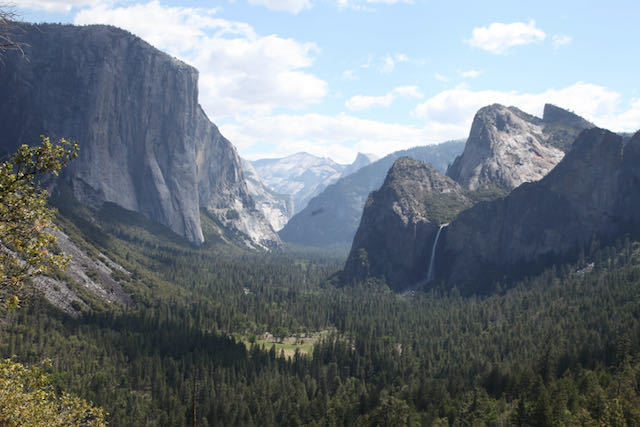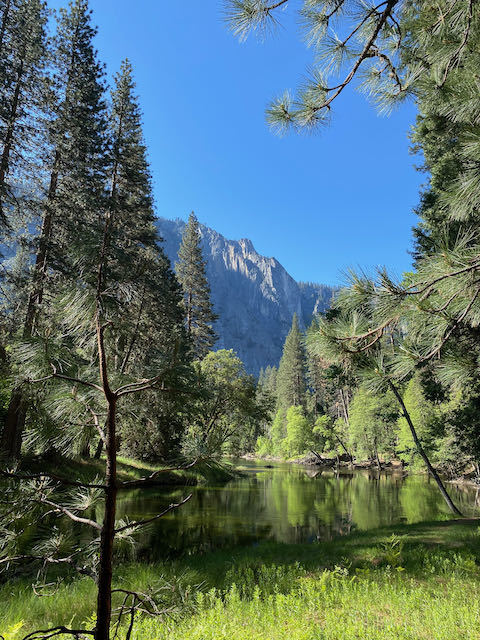
CONGRATULATIONS TO GRATTECIELLA FOR THE FTF!
THE GEOLOGY
Billions of years ago, as our new planet cooled, the skin that formed on the surface broke up into lighter pieces called continental plates, and heavier pieces called oceanic plates. Both of these floated around on the semi molten rock beneath them.
As it happens, two of these plates collided: with the heavier Farallon oceanic plate diving beneath the lighter North American continental plate. This collision lead to friction, heat, and melted rock called magma. Some of the magma eventually forcefully escaped to the surface as lava, forming the volcanic Ancestral Sierra Nevada mountain range that reached average heights of about 13,000 feet with volcanic summits rising up to about 20,000 feet. The magma that remained miles below the surface slowly cooled and solidified to form granite.

THE GRANITE & GLACIERS
Because the magma beneath the surface cooled slowly, the granite that was formed contained large interlocking crystals, resulting in a very strong & durable rock structure. Over millions of years, the Ancestral Sierras were gradually eroded and reshaped by nature with the sediment being carried away to the Central Valley of California, leaving the central granite core exposed. About 25-15 million years ago, the continental plates shifted again, with the Sierra crust expanding and rising, giving us the Sierra range of today with its long westward slope and steep eastern escarpment. The area continues to rise today at about 1 1/2 inches per 100 years.
More recently in geological history, the glaciers moved through the canyons, deepening and widening them, and depositing rock and debris called moraines, along their routes. The last glacier, about 22,000 years ago, left a moraine that caused the Merced River to form a shallow lake that eventually formed the flat surface of the valley floor that we see today.
The Geology of Yosemite creates the backdrop for the beauty that we now enjoy. Time and erosion of the less durable rock has left us with the awe-inspiring granite mountains and structures that we see all around us. The climate of hot, dry summers, and cool wet winters combine with these granite mountains to create life zones that support a large variety of species at different altitudes. Much of the area that most people visit in Yosemite is in the Lower and Upper Montane zones from about 3500 to 8500 feet. The Valley floor is at 4000 feet, and the top of Half Dome is over 8500 feet as examples.

THE GROVE
The Mariposa Grove area is at the southernmost area of the Yosemite Park, at between 5740 and 6730 feet altitude. In 1864 President Lincoln signed the Yosemite Grant: legislation protecting the Grove and Yosemite Valley for “public use, resort, and recreation.” This was the first time that the federal government set aside a scenic natural area to be protected for future generations to enjoy. The area became a National Park in 1890, but continued under the Yosemite Grant to the State of California until it was accepted by the federal government in 1906. Much of the geology in the Grove is similar to other parts of the park. Much of the rock that is seen here is composed of similar granite to El Capitan and similar rock formations, consisting of coarse-grained white to light-gray biotite granite. There are also areas of volcanic and sedimentary rock in the Grove. However, as opposed to the other geologic areas of the park, the youngest volcanic rocks ( about 3.5 million years old) are found along this South boundary of the park, in this area of the Grove. These are basaltic lava flows and are unusually rich in potassium for such rocks. The significance of these rocks to the life zones here is not mentioned in the geological reports. Another possible point that may be important to the area is that it is outside the limits of the last large glaciation. Thus the area escaped the glacial erosion that would have scoured away the well-developed mineral soils here that are so essential.

Now for the requirements for this Earthcache:
- From the writeup, or your readings and what you directly observe in this area, list one of the geological features that is similar in the Grove to the rest of Yosemite
- From your observations list one or more of the geological features that are unique to this same area.
Optional: Post a picture of yourself or your GPS near the Waypoint
You can log your find without waiting for me to confirm your answers but if there is a problem with your answers, I will contact you.
Acknowledgements: Geologic Map of Yosemite National Park & Vicinity by N. King Huber, Paul C Batemen, and Clyde Wahrhaftig, 1989
The Geologic Story of Yosemite National Park U.S. Geological Survey Bulletin 1595
Permission to place this Earthcache confirmed with Greg Stock PhD, PG, Yosemite Park Geologist. Thanks to him also for reviewing the content of the writeup.